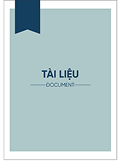Tài liệu
Factors influencing Vietnam ’ s handicraft export with the gravity model

Xem mô tả
312
Xem & Tải
8
Tóm tắt
Purpose – The purpose of this paper is to investigate the factors that affect handicraft export from Vietnam to trading partners in the period 2007–2017, and how those factors influence the export of handicraft products of Vietnam. Design/methodology/approach – The research uses the approach of gravity model based on panel data to evaluate the export of Vietnamese handicraft to 50 main trading partners, covering the period from 2007 to 2017. Findings – The estimated results reveal that Vietnam’ s GDP, importer’ s GDP, trading partner’ s population, Vietnam’ s inflation, the economic distance between Vietnam and importer, the openness of Vietnam, importing country’ s common language and the issue that both Vietnam and importer are member of APEC are the main factors affecting Vietnamese handicraft export. Research limitations/implications – This study also has some limitations. It is limited in the data, as some other areas in the world have not been observed and included in the research. In the future, a study with large-scale data of space and time should be conducted, which will certainly give a universal result and fewer errors. However, this paper, in our opinion, provides a significant result and may help the government and policy makers to undertake appropriate measures to improve and promote the export of Vietnamese handicrafts to the world markets. Practical implications – The research describes the current situation, and it studies factors influencing Vietnam’ s handicraft export using the qualitative analysis. The result should be useful for the policy maker and enterprises to promote export activities of Vietnamese handicrafts to international markets. Social implications – Handicraft export of Vietnam plays an important part in retaining the culture value and social development as well as encouraging sustainable development for the rural poor within the country. Originality/value – The past research related to Vietnamese handicraft export almost analyzed the situation to promote export handicrafts. This research is based on the study of factors affecting trade and the gravity model to elaborate and supplement the factors that affect the export of handicraft in accordance with the actual conditions of Vietnam.
Mô tả
economic management and policy
Tác giả
Luong, Anh Thu
Người hướng dẫn
Nơi xuất bản
Nhà xuất bản
Kinh Tế Quốc Dân
Năm xuất bản
2019
ISBN
1951-0020
ISSN
Từ khóa chủ đề
Panel data , Export , The gravity model , Vietnamese handicrafts
Trích dẫn
Bộ sưu tập
Tệp tin

10-1108_JED-08-2019-0021.pdf
D:\NEU_DSpace\tapchitienganh
Dung lượng: 937.29 KBĐịnh dạng: pdf
Lượt xem: 6 Lượt tải: 2
